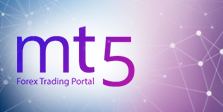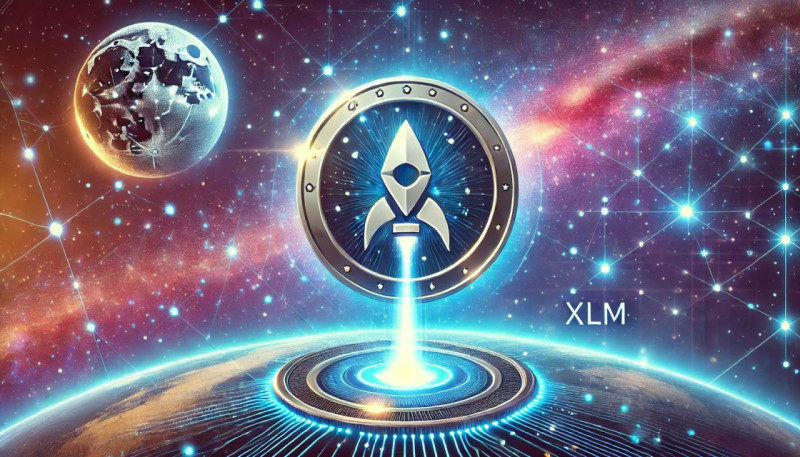
Introduction
Cryptocurrencies have revolutionized the way we think about money, offering a decentralized, digital alternative to traditional financial systems. Among the vast array of cryptocurrencies available today, many of which are included in various utility cryptocurrency lists, XLM, or Stellar Lumens, stands out as a unique player in the market. Launched in 2014, XLM is the native cryptocurrency of the Stellar network, a blockchain-based platform designed to facilitate fast, secure, and low-cost cross-border transactions.
Stellar was created with the mission of bridging the gap between traditional financial institutions and the world of cryptocurrencies, making it easier and more affordable for people, particularly in developing regions, to access financial services. XLM plays a crucial role in this ecosystem by acting as a bridge currency, allowing for the seamless exchange of different fiat currencies and cryptocurrencies. This capability makes XLM particularly significant in the global financial landscape, where cross-border payments and remittances are often plagued by high fees and slow processing times.
In essence, XLM is not just another cryptocurrency; it is a key component of a broader vision to create a more inclusive and efficient global financial system.
Understanding XLM: The Basics
XLM, also known as Stellar Lumens, is the native cryptocurrency of the Stellar network, a blockchain-based platform created to facilitate cross-border transactions. But what exactly is XLM? At its core, XLM functions as a digital currency designed to bridge different currencies, enabling seamless, quick, and cost-effective international payments.
The origin of Stellar Lumens dates back to 2014, when it was founded by Jed McCaleb, one of the co-founders of Ripple. The Stellar network was developed with a clear mission: to promote financial inclusion by connecting financial institutions, payment systems, and people, particularly in underbanked regions. Unlike Bitcoin, which primarily serves as a store of value, and Ethereum, which focuses on smart contracts, XLM’s primary function is to facilitate low-cost, real-time transactions across borders.
One of the key differences between XLM and other cryptocurrencies lies in its consensus mechanism. While Bitcoin relies on a resource-intensive proof-of-work protocol, Stellar uses the Stellar Consensus Protocol (SCP), which is more energy-efficient and allows for faster transaction processing. This protocol ensures that transactions on the Stellar network are validated quickly and securely, making it ideal for financial applications.
The Stellar network itself is designed to be an open-source, decentralized platform that supports the issuance, transfer, and exchange of digital assets, including fiat currencies and cryptocurrencies. XLM serves as the intermediary currency that helps convert one asset to another, minimizing transaction costs and reducing the complexity of cross-border payments. This functionality positions XLM as a key player in the global financial ecosystem, particularly for remittances and microtransactions.
What is XLM Crypto and How Does It Work?
XLM, or Stellar Lumens, plays a central role in the operation of the Stellar network, a blockchain platform designed to enable fast, secure, and low-cost cross-border transactions. To understand how XLM works, it's important to grasp its function within this network and the technology that powers it.
The Role of XLM in the Stellar Network
In the Stellar ecosystem, XLM serves as a bridge currency. When two parties want to exchange different currencies on the Stellar network, XLM can be used as an intermediary to facilitate the transaction. This means that if someone wants to convert US dollars to euros, XLM can be used to bridge the gap between the two, ensuring a seamless and efficient transaction. This functionality is especially useful for reducing costs and speeding up transactions, particularly in scenarios where direct currency pairs are not available.
Transaction Processing on Stellar Using XLM
Transactions on the Stellar network are processed through a decentralized network of nodes that work together to validate and confirm transactions. When a transaction is initiated, it is propagated across the network, and the nodes reach a consensus on its validity using the Stellar Consensus Protocol (SCP). This consensus mechanism is much faster and more energy-efficient compared to traditional proof-of-work systems like Bitcoin's. SCP ensures that transactions are confirmed in just a few seconds, making the network highly responsive and suitable for real-time financial applications.
The Stellar Consensus Protocol (SCP)
SCP is a unique consensus algorithm that allows the Stellar network to operate in a decentralized manner while maintaining high levels of security and efficiency. Unlike proof-of-work, which requires miners to solve complex mathematical problems, SCP relies on a quorum system, where a group of trusted nodes must agree on the validity of transactions. This system not only speeds up transaction processing but also reduces the environmental impact associated with mining.
Real-World Applications of XLM
XLM's unique capabilities have led to its adoption in various real-world applications. One of the most prominent uses of XLM is in remittances, where it helps facilitate low-cost, cross-border money transfers, often at a fraction of the cost of traditional methods. Additionally, XLM is used in micropayments, enabling small, real-time transactions that would be impractical with higher-fee networks. These applications showcase XLM’s potential to make global financial services more accessible, particularly in regions with limited banking infrastructure.
In summary, XLM operates as the lifeblood of the Stellar network, enabling fast, low-cost transactions through its innovative consensus protocol and serving crucial roles in remittances, micropayments, and beyond.
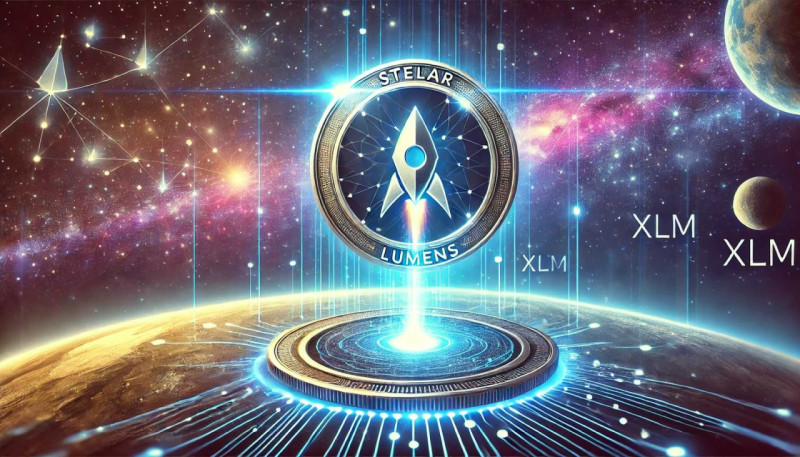
Benefits of Using XLM
Low Transaction Costs
One of the most significant advantages of using XLM is its low transaction costs. Unlike traditional financial systems that often charge high fees for international transfers, Stellar transactions involving XLM are extremely cost-effective. The network is designed to facilitate microtransactions, with fees typically measured in fractions of a cent. This makes XLM an ideal choice for users who need to send money across borders frequently or in small amounts without incurring substantial fees.
Fast Transaction Times
Speed is another key benefit of XLM. The Stellar network is capable of processing transactions in just a few seconds, making it one of the fastest blockchain platforms available. This rapid processing time is crucial for real-time financial applications, such as remittances and online payments, where delays can be costly or inconvenient. The Stellar Consensus Protocol (SCP) ensures that transactions are confirmed quickly, providing a seamless experience for users.
Security and Decentralization
XLM also offers a high level of security and decentralization, which are essential features for any cryptocurrency. The Stellar network operates in a decentralized manner, with no single entity controlling the system. This decentralization enhances security by reducing the risk of hacking or manipulation. Additionally, the Stellar Consensus Protocol ensures that transactions are verified by multiple trusted nodes, further safeguarding the integrity of the network.
Global Reach and Accessibility
Finally, XLM’s global reach and accessibility make it a powerful tool for financial inclusion. The Stellar network is designed to work seamlessly across borders, allowing users to send and receive money anywhere in the world. This is particularly valuable in regions where access to traditional banking services is limited. By enabling fast, affordable, and secure cross-border transactions, XLM helps to connect people to the global economy, regardless of their location or financial status.
XLM's low costs, speed, security, and global reach make it an attractive option for both individuals and businesses looking to engage in cross-border financial activities.
What is XLM Crypto: Comparison with Other Cryptocurrencies
XLM (Stellar Lumens) occupies a unique position in the cryptocurrency landscape, offering features that differentiate it from other major cryptocurrencies like Bitcoin (BTC), Ethereum (ETH), and Ripple (XRP). Understanding these differences can help users make informed decisions about which cryptocurrency best suits their needs.
Comparison with Bitcoin (BTC)
Bitcoin, the first and most well-known cryptocurrency, was designed primarily as a decentralized digital currency and a store of value. In contrast, XLM focuses on facilitating cross-border transactions and enabling financial inclusion. While Bitcoin relies on the energy-intensive proof-of-work (PoW) consensus mechanism, Stellar uses the Stellar Consensus Protocol (SCP), which is more energy-efficient and faster. As a result, XLM transactions are processed much more quickly and at a fraction of the cost compared to Bitcoin.
Comparison with Ethereum (ETH)
Ethereum is known for its smart contract functionality, allowing developers to build decentralized applications (DApps) on its platform. XLM, however, is not primarily a smart contract platform but instead focuses on facilitating seamless currency exchanges and low-cost transactions. While Ethereum is transitioning to a proof-of-stake (PoS) consensus mechanism, which is more efficient than PoW, XLM’s SCP still offers faster transaction times and lower fees. XLM is ideal for quick transactions and currency transfers, whereas Ethereum is more suited for complex applications involving smart contracts.
Comparison with Ripple (XRP)
Ripple (XRP) shares some similarities with XLM, as both are designed to facilitate cross-border transactions. However, there are key differences between the two. Ripple is more focused on working with financial institutions to enable bank-to-bank transfers, whereas Stellar aims to provide financial services to individuals, particularly in underbanked regions. Additionally, while Ripple uses its own consensus protocol, the Stellar Consensus Protocol used by XLM is designed to be more decentralized, promoting greater security and trust within the network.
Table: Key Differences Between XLM, BTC, ETH, and XRP
| Feature | XLM (Stellar Lumens) | BTC (Bitcoin) | ETH (Ethereum) | XRP (Ripple) |
| Transaction Speed | Fast (2-5 seconds) | Slow (10 minutes) | Medium (15 seconds) | Fast (4 seconds) |
| Transaction Cost | Low | High | Medium | Low |
| Consensus Mechanism | Stellar Consensus Protocol (SCP) | Proof of Work | Proof of Stake | Ripple Protocol |
| Primary Use Case | Cross-border payments | Store of value | Smart contracts | Bank transfers |
While XLM shares certain attributes with other major cryptocurrencies, its focus on fast, low-cost cross-border transactions and financial inclusivity sets it apart. Whether for individual remittances or as a bridge currency for global transactions, XLM offers a distinctive value proposition within the broader cryptocurrency market.
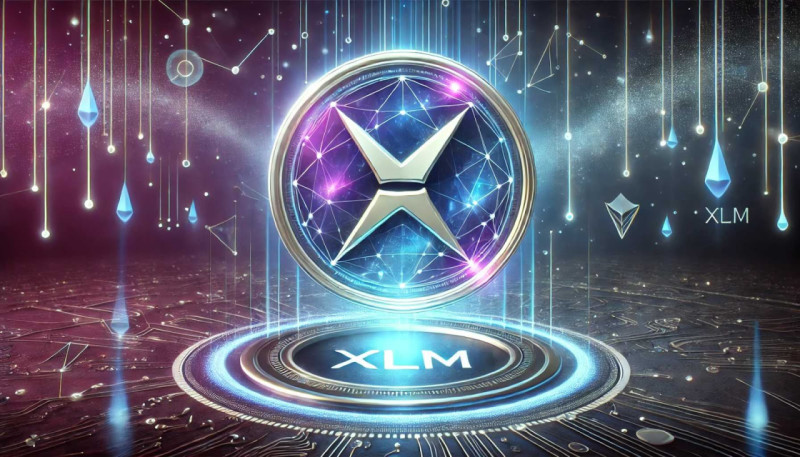
What is XLM Crypto: How to Buy and Store
Purchasing and securely storing XLM (Stellar Lumens) is a straightforward process, but it’s important to understand the steps involved to ensure your investment is safe.
Overview of Exchanges Where XLM Can Be Purchased
XLM is available on numerous cryptocurrency exchanges, making it accessible to a wide range of users. Popular exchanges like Binance, Coinbase, Kraken, and Bitfinex offer XLM trading pairs, allowing you to buy XLM with fiat currencies like USD or EUR, or with other cryptocurrencies such as Bitcoin (BTC) or Ethereum (ETH). To purchase XLM, you’ll need to create an account on one of these exchanges, verify your identity, deposit funds, and then place an order for XLM.
Different Types of Wallets for Storing XLM
Once you’ve purchased XLM, it’s crucial to store it in a secure wallet. There are two main types of wallets: hot wallets and cold wallets. Hot wallets are digital wallets connected to the internet, such as mobile apps or desktop software, which are convenient for everyday transactions. Examples include the official Stellar wallet and other multi-currency wallets like Trust Wallet and Atomic Wallet.
Cold wallets, on the other hand, are offline storage devices, such as hardware wallets (e.g., Ledger Nano S or Trezor). Cold wallets are considered more secure since they are not susceptible to online hacking attempts, making them ideal for long-term storage of large amounts of XLM.
Security Tips for Storing Cryptocurrency
To ensure the security of your XLM, follow these best practices:
- Use two-factor authentication (2FA) on your exchange accounts and wallets.
- Store the majority of your XLM in a cold wallet, especially if you don’t need to access it frequently.
- Keep your private keys and recovery phrases secure and never share them with anyone.
- Regularly update your wallet software to the latest version to protect against security vulnerabilities.
By following these guidelines, you can safely purchase and store your XLM, ensuring that your investment remains protected against potential threats.
Future of XLM and Stellar
The future of XLM (Stellar Lumens) and the Stellar network appears promising, driven by ongoing developments, strategic partnerships, and emerging trends in the cryptocurrency space.
Current Developments and Partnerships Involving Stellar
Stellar has been actively expanding its ecosystem through a variety of partnerships and technological upgrades. One notable development is Stellar’s collaboration with global financial institutions and payment providers to enhance cross-border payment solutions. For example, Stellar has partnered with IBM on the World Wire project, which aims to streamline international transactions using blockchain technology. Additionally, the Stellar Development Foundation (SDF) continues to invest in projects that promote financial inclusion, such as supporting fintech startups and exploring use cases in decentralized finance (DeFi).
Future Trends in the Cryptocurrency Space That May Impact XLM
As the cryptocurrency market evolves, several trends could significantly impact the adoption and value of XLM. The growing demand for fast and affordable cross-border payment solutions aligns with Stellar’s core mission, potentially increasing the utility of XLM. Additionally, the rise of central bank digital currencies (CBDCs) could present new opportunities for Stellar to serve as an interoperable platform for exchanging digital currencies globally. The increasing focus on sustainability in blockchain technology also positions Stellar favorably, given its energy-efficient consensus protocol.
Potential Challenges and Opportunities
Despite its potential, XLM faces challenges, including competition from other blockchain platforms like Ripple (XRP) and the need for broader adoption to achieve network effects. Regulatory developments in the cryptocurrency space could also impact Stellar, particularly in regions with stringent financial regulations.
However, these challenges also present opportunities. By continuing to build strong partnerships, focusing on financial inclusivity, and staying ahead of technological trends, Stellar and XLM could play a crucial role in the future of global finance, particularly in connecting the unbanked and underbanked populations to the digital economy.
The future of XLM and Stellar is filled with both potential and uncertainty, but their unique value proposition in the global financial system positions them well for continued growth and impact.
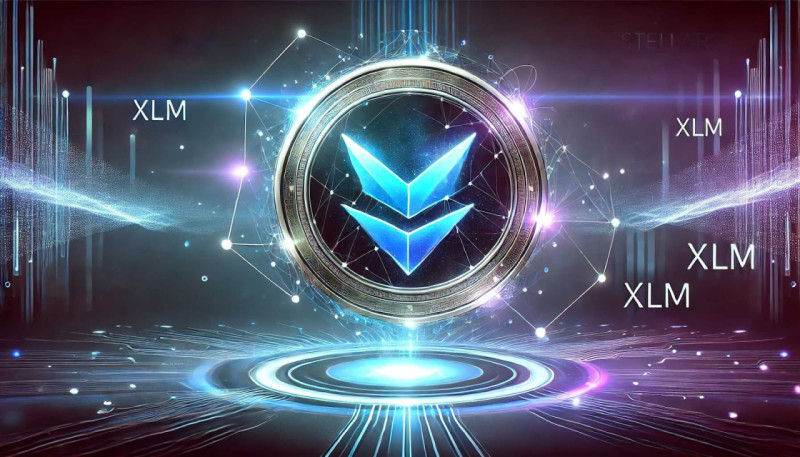
Conclusion: What is XLM Crypto
Understanding XLM (Stellar Lumens) and its role within the Stellar network is crucial for anyone interested in the evolving landscape of cryptocurrency. As a bridge currency, XLM facilitates fast, low-cost, and secure cross-border transactions, making it a powerful tool in the quest for global financial inclusion. Unlike many other cryptocurrencies, XLM is not just a digital asset but a key component of a broader mission to connect the world’s financial systems and provide accessible financial services to those who need them most.
In the cryptocurrency market, XLM stands out for its unique focus on transaction efficiency and financial accessibility. Its energy-efficient consensus protocol, coupled with strong partnerships and ongoing developments, positions XLM as a cryptocurrency with significant potential for future growth. Whether you are an investor, a business owner, or someone interested in the future of finance, XLM offers a compelling value proposition.
As the world moves towards greater digitalization of financial systems, XLM and the Stellar network are poised to play an increasingly important role in shaping the future of global finance. By understanding XLM, you are better equipped to navigate and participate in this dynamic and rapidly changing space.













